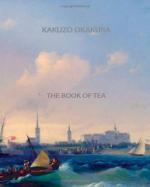
|
| Name: _________________________ | Period: ___________________ |
This test consists of 15 multiple choice questions and 5 short answer questions.
Multiple Choice Questions
1. Emperor Huei Tsung lavished much wealth on the attainment of rare species of tea, and declared which tea to be the most rare and best?
(a) Grey.
(b) Green.
(c) Black.
(d) White.
2. How did tea grew in popularity?
(a) Slowly.
(b) Quickly.
(c) Steadily.
(d) Sporadically.
3. The book also discusses well-known tea drinkers from history, and_________ methods of tea drinking which are to be avoided.
(a) "Gross."
(b) "Vulgar."
(c) "Disgusting."
(d) "Ugly."
4. The year _______ is the first written mention of tea in the Western world.
(a) 859.
(b) 869.
(c) 849.
(d) 879.
5. Okakura worked to make the Boston Museum a world-famous repository of what?
(a) Korean art.
(b) Asian art.
(c) Chinese art.
(d) Japanese art.
6. He studied under a Harvard-educated American, Ernest Fenollosa, who was instrumental in _________________ Westernization in Japan.
(a) Ignoring.
(b) Promoting.
(c) Encouraging.
(d) Halting.
7. What does the "religion of aestheticism" celebrate?
(a) The beautiful, the pure, and the harmonious.
(b) The peaceful and muted.
(c) The colorful and bright.
(d) That which is in unity.
8. Are stereotypes breaking down with modernization?
(a) Yes.
(b) No.
(c) Only at first.
(d) Only slightly.
9. What are these eras?
(a) The Boiled Tea, the Whipped Tea, and the Steeped Tea.
(b) The Boiled Tea, the Whipped Tea, the Steeped Tea, the Cooked Tea, the Steamed Tea, and the Black Tea..
(c) The Boiled Tea, the Whipped Tea, the Steeped Tea, and the Cooked Tea..
(d) The Boiled Tea, the Whipped Tea, the Steeped Tea, the Cooked Tea, and the Steamed Tea.
10. ____________ and tea are connected in legend.
(a) Buddhism.
(b) Zennism.
(c) Taoism.
(d) Hinduism
11. Some statesmen, philosophers, and artists of the West could be referred to as what?
(a) "Tea-aestheticians."
(b) "Tea-lovers."
(c) "Tea-philosophers."
(d) "Tea-fiends."
12. When was this power of tea shown?
(a) By the late-1500s.
(b) By the late-1600s.
(c) By the late-1400s.
(d) By the late-1700s.
13. Tea is ________.
(a) Music.
(b) Dance.
(c) Art.
(d) Philosophy.
14. Is there a mechanical method for making tea?
(a) Yes.
(b) Sometimes.
(c) No.
(d) Usually.
15. With what is Taoism is mostly concerned?
(a) "Conformity of the group" and unity within a community.
(b) "Cosmic change" and the infinite nature of the universe.
(c) "Earthly change" and spiritual growth.
(d) "Personal change" and what takes place in the self.
Short Answer Questions
1. What did some claim about tea?
2. What does Taoism say about right and wrong?
3. Okakura again emphasizes that tea can do what for a culture?
4. Tea began as what and only gradually grew into a beverage?
5. What did some people call tea?
|
This section contains 426 words (approx. 2 pages at 300 words per page) |

|




